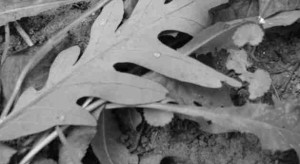
Photo: Susan Aaron
Botanical preparations of various forms are often used in TCVM. They can assist the flow and quality of Qi and complement acupuncture and tui-na treatments. Botanical prescriptions are composed of a synergistic combination of herbs that are chosen for their unique properties, and are tailored to the individual’s specific needs. The use of plants, animal parts and minerals, or extracts thereof, to treat illness dates back thousands of years. The early use of botanicals is recorded in Shen Nong’s “Shen Nong Ben Cao Jing”, the orginal text on Chinese botanical therapy. In 1785 William Withering “discovered” the folk herbal remedy foxglove leaf for “dropsy” (hydrops or edema, which is excess fluid in the tissues due to heart failure). He isolated and purified digitoxin (one of many medicinal compounds in the plant), and carefully recorded toxic side-effects. From then on conventional medical and pharmaceutical researchers believed that the active components of plants should be extracted, purified and given in specific dosages. This approach ignores the benefit of all the other componants of the plant (nutritional and medicinal) that work synergistically with the one compound western medicine considers the “active ingredient”.
Safety and effectiveness are of prime consideration when using herbal medicine. An accurate TCVM diagnosis of the patient’s problems, after a complete assessment consisting of a comprehensive history, physical examination, and appropriate diagnostic testing, forms the basis of treatment. Any veterinarian prescribing Chinese botanicals for treatment purposes should have a thorough training in TCVM and the use of herbs. Chinese botanical medicine can be especially in useful in patients with chronic conditions, where long term therapy is required and internal organs need nourishment and support. They contain many active componants that can be loosely grouped into four classifications:
- Polysaccharides
- Enhance the immune response. This can help the body defend itself from external attack, as well as internal attack such as cancer.
- Flavenoids
- Dilate blood vessels, have anti-allergy, anti-bacterial, anti-viral and blood-thinning effects. They can form tannins which control inappropriate fluid release from cell surfaces.
- Steroids
- A large group of compounds, including many hormones. Natural steroids have a much lower potency than synthetic (pharmacological) forms. They have anti-spasmodic, anti-inflammatory, anti-allergy, and fluid nourishing capabilities.
- Alkaloids
- At low dosages they stimulate the heart and lungs, and at higher dosages they act as sedatives. In addition the have anti-inflammatory, anti-bacterial and pain-releif properties. They also enhance immunity.
Chinese botanical medicine can be used effectively on its own or in combination with acupuncture and/or western Medicine. If used in conjunction with western medications or nutraceuticals the possible drug/herb interactions must be taken into consideration. Botanical medicine should only be employed under the instruction and supervision of an appropriately trained veterinarian.













